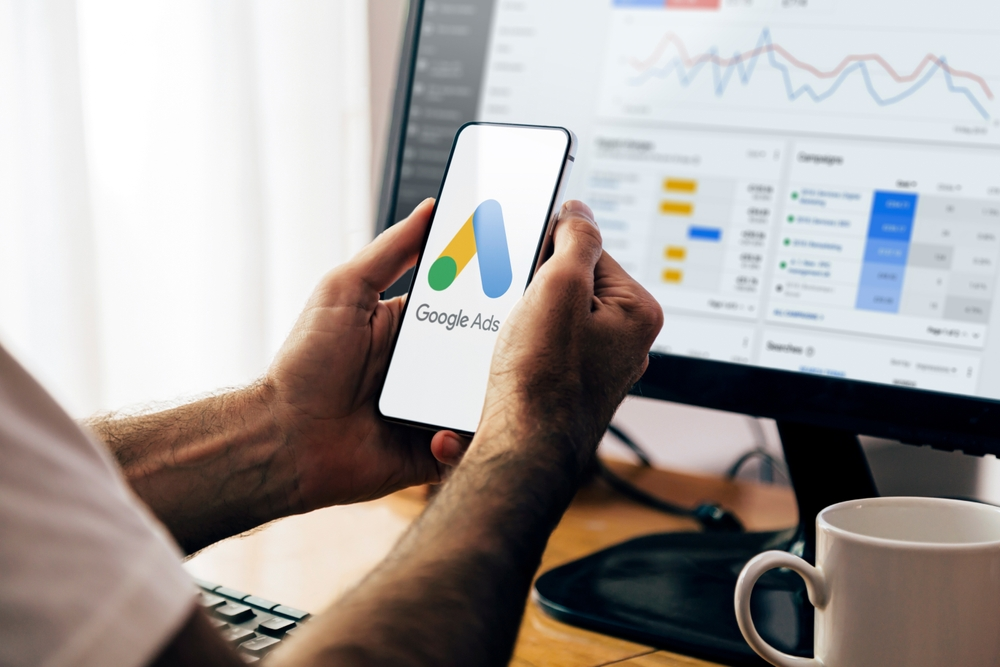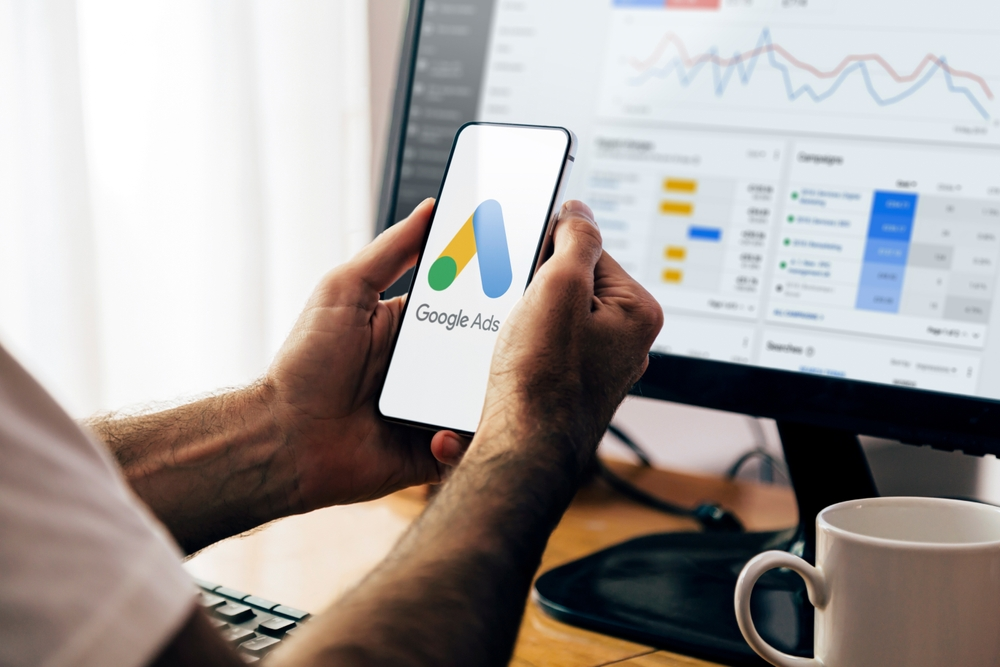Missouri Marketing Resource Blog

8 Common Google Ads Misconceptions That Could Cost You Money

Google Ads remains one of the most powerful digital marketing tools available, capable of driving immediate traffic, generating quality leads, and boosting sales for businesses across every industry. Yet despite its proven effectiveness, countless business owners hesitate to leverage this platform—or abandon it prematurely—due to persistent myths and misconceptions.Misconceptions about Google Ads can lead to wasted budgets and poor results. Many believe ads are "too expensive" or require little effort, but success comes with the right strategy. By understanding how the platform works, businesses can unlock growth and achieve strong returns on their investment.
Let's examine eight of the most common Google Ads misconceptions and reveal what successful advertisers actually know about this powerful marketing platform.
Key Takeaways
- Google Ads budgets are completely flexible and can work for businesses of any size
- Paid search and SEO work together to maximize your overall online visibility
- Successful campaigns require ongoing optimization and active management
- Ad position matters less than conversion rates and overall ROI
- Click fraud protection systems are sophisticated and constantly improving
- Professional management significantly impacts campaign performance and budget efficiency
- Every industry can benefit from Google Ads with the right campaign strategy
Misconception #1: "Google Ads is too expensive for small businesses"
This misconception stems from stories about businesses burning through thousands of dollars with little to show for it. However, the reality is that Google Ads operates on a flexible budget system where you maintain complete control over your spending.
You can start with as little as $10 per day and scale up based on results. The key lies not in the size of your budget, but in how strategically you use it. A well-optimized campaign with a modest budget often outperforms a poorly managed campaign with unlimited spending power.
Small businesses actually have several advantages in Google Ads. They can focus on highly specific, local keywords with less competition. They can create more personalized ad copy that resonates with their target audience. Most importantly, they can be more agile in testing and optimizing their campaigns based on performance data.
Success comes from understanding your target audience, choosing the right keywords, creating compelling ad copy, and continuously optimizing based on performance metrics—not from having the biggest advertising budget in your industry.
Misconception #2: "If I run Google Ads, I don't need SEO"
This misconception treats paid search and organic search as competing strategies, when they're actually complementary marketing channels that work better together.
Google Ads provides immediate visibility and traffic. When someone searches for your target keywords, your ads can appear instantly, driving qualified visitors to your website right away. This immediacy makes paid search ideal for product launches, seasonal campaigns, or when you need quick results.
SEO, on the other hand, builds long-term organic authority and sustainable traffic growth. While it takes time to see results, organic rankings don't cost money per click and can provide consistent traffic for months or years.
The most successful businesses use integrated strategies that leverage both channels. They use Google Ads data to identify high-converting keywords for their SEO efforts. They create landing pages that serve both paid and organic traffic. They use ads to capture immediate demand while building long-term organic presence for sustained growth.
When your business appears in both paid and organic results, you increase your overall visibility, credibility, and click-through rates across both channels.
Misconception #3: "Set it and forget it"
Perhaps no misconception is more damaging than believing that Google Ads campaigns can run successfully without ongoing attention. This "set and forget" mentality leads to wasted budgets, declining performance, and missed opportunities.
Successful Google Ads management requires regular optimization across multiple areas. Keyword performance changes over time, requiring additions, removals, and bid adjustments. Negative keywords must be added continuously to prevent irrelevant traffic. Ad copy needs regular testing to improve click-through and conversion rates.
Landing page performance should be monitored and improved based on user behavior data. Bid strategies may need adjustment based on competition changes and seasonal trends. New features and campaign types are regularly released, offering fresh opportunities for growth.
The most successful advertisers treat their campaigns like living, breathing marketing systems that require ongoing attention and optimization. They monitor performance weekly, test new approaches monthly, and make strategic adjustments based on changing business goals and market conditions.
Misconception #4: "The #1 spot always wins"
Many advertisers become obsessed with achieving the top ad position, believing it guarantees the best results. However, ad success depends on much more than position alone.
Google's ad rank system considers both your bid amount and your Quality Score, which measures ad relevance, landing page experience, and expected click-through rate. A highly relevant ad with a strong Quality Score can achieve excellent results in positions two or three while paying less per click than competitors in the top position.
Lower positions often deliver better return on investment because they cost less while still capturing qualified traffic. Users who click on ads in positions two through four are often more engaged and conversion-ready, having taken the time to review multiple options before clicking.
The key is focusing on conversion metrics rather than position metrics. Track which positions drive the most valuable actions for your business—whether that's phone calls, form submissions, or purchases. Optimize for profitability, not just visibility.
Misconception #5: "Clicks equal customers"
Clicks measure traffic, but traffic alone doesn't build businesses. This misconception leads advertisers to optimize for the wrong metrics, celebrating high click-through rates while ignoring actual business results.
Conversions are the true measure of Google Ads success. Conversions represent valuable actions that move prospects closer to becoming customers—phone calls, form submissions, email signups, or direct purchases.
Proper conversion tracking is essential for measuring real ROI and making informed optimization decisions. Google Ads provides sophisticated tracking tools that can measure online conversions, phone calls generated by ads, and even offline sales that result from online advertising.
Focus your optimization efforts on improving conversion rates, not just click-through rates. Test different landing pages, refine your target audience, adjust your bidding strategy based on conversion data, and allocate more budget to keywords and campaigns that drive actual business results.
Misconception #6: "My competitors can click my ads and waste my budget"
Click fraud concerns prevent many businesses from trying Google Ads, but Google's fraud detection systems are more sophisticated than most people realize.
 Google uses advanced machine learning algorithms to identify and filter out invalid clicks in real-time. They analyze dozens of factors including IP addresses, click patterns, browser information, and user behavior to distinguish between legitimate and fraudulent activity.
Google uses advanced machine learning algorithms to identify and filter out invalid clicks in real-time. They analyze dozens of factors including IP addresses, click patterns, browser information, and user behavior to distinguish between legitimate and fraudulent activity.
When invalid clicks are detected, advertisers are typically reimbursed automatically. Google's business model depends on advertiser satisfaction and long-term success, so they have strong incentives to protect against click fraud.
While no system is perfect, click fraud represents a small percentage of total clicks for most advertisers. The protection systems are constantly improving, and the benefits of legitimate traffic far outweigh the minimal risks from fraudulent activity.
Misconception #7: "Anyone can manage Google Ads easily"
Google Ads' user-friendly interface can create the illusion that campaign management is simple. However, effective campaign management requires deep understanding of keyword strategy, bid management, audience targeting, and conversion optimization.
Common mistakes made by inexperienced advertisers include using overly broad keyword match types, neglecting negative keywords, targeting audiences too broadly, creating weak ad copy, and directing traffic to poorly optimized landing pages. These mistakes can quickly consume budgets while delivering poor results.
Certified Google Ads specialists understand advanced features like automated bidding strategies, audience targeting options, and campaign optimization techniques. They stay current with platform updates, best practices, and industry trends that impact campaign performance.
Professional management typically pays for itself through improved performance, reduced waste, and strategic optimizations that increase ROI beyond what most businesses achieve on their own.
Misconception #8: "Google Ads don't work for my industry"
This misconception often stems from limited understanding of Google Ads' diverse campaign types and targeting options. The platform offers multiple campaign formats designed for different business goals and industries.
Search campaigns capture high-intent users actively searching for your products or services. Display campaigns build brand awareness through visual ads across millions of websites. YouTube campaigns reach users through video content. Performance Max campaigns use machine learning to find customers across all Google properties.
Every industry has opportunities for successful Google Ads campaigns. B2B companies can generate qualified leads through targeted search campaigns. E-commerce businesses can showcase products through Shopping campaigns. Local service providers can capture nearby customers through location-based targeting.
Success requires matching the right campaign type to your business goals and understanding how your target audience uses Google to find solutions. With proper strategy and execution, businesses in virtually any industry can achieve positive results from Google Ads.
Transform Your Digital Marketing with Google Ads
These eight misconceptions have stopped many businesses from using one of digital marketing's best tools: Google Ads. By moving beyond these myths and applying accurate knowledge, you can drive immediate traffic, qualified leads, and measurable growth.
Google Ads works best as part of a larger strategy alongside SEO, social media, and content marketing. Success requires ongoing attention, proper tracking, and continuous optimization.
Ready to see how Google Ads can boost your business? Start with a campaign audit or consultation to uncover opportunities and develop a strategic plan for better results.

